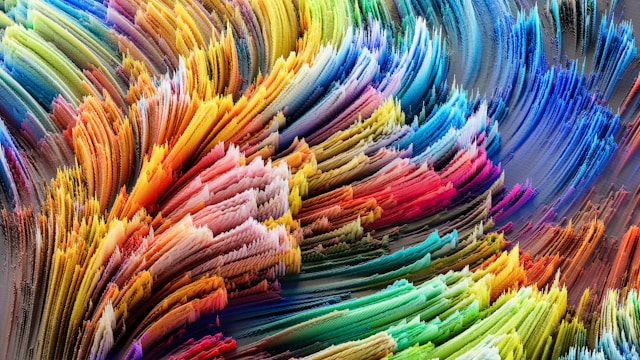Color is a fundamental aspect of human perception, deeply influencing emotions and decisions, and it plays a pivotal role in everything from design and art to marketing and personal expression. The variety of colors available today is virtually limitless, thanks to advances in technology and an increased understanding of how colors can be created and manipulated. This diversity allows for precise communication, enhanced aesthetics, and personalization in various fields of application.
The Science of Color
Color originates from light; what we perceive as color is actually light waves absorbed or reflected by objects. A color’s wavelength determines its hue, with each color on the visible spectrum representing a different wavelength. This scientific understanding has laid the foundation for creating a vast array of colors in materials, lights, and digital displays.
In the world of physical objects, pigments and dyes are used to absorb certain wavelengths of light, thus dictating the color that our eyes perceive. In digital displays, colors are created through the combination of red, green, and blue light, with varying intensities creating the spectrum of possible colors.
Colors in Nature
Nature provides a dazzling array of colors, from the deep blues and vast array of greens found in seas and forests to the brilliant colors of flowers designed to attract pollinators. Animals also display a wide range of colors, used for attraction, camouflage, or warning. These natural colors have inspired human applications and adaptations in everything from fashion to architecture.
Colors in Art and Design
Artists and designers use color to evoke specific emotions, convey messages, or create balance and harmony in their works. The psychology of color is a crucial tool in these fields. For example, blue can convey tranquility and reliability, often used in corporate designs, while red can evoke feelings of passion and urgency, frequently seen in sales or warning signs.
Color theory, which involves the study of color mixing and the visual effects of specific color combinations, is integral to both art and design. It helps artists and designers understand how different colors interact, how they can be combined to sustain attention, and how they affect viewers psychologically and emotionally.
Color Trends
Color trends are incredibly influential in fashion, interior design, and marketing. These trends often reflect broader societal shifts. For instance, the popularity of earth tones may reflect a growing interest in sustainability and natural materials, while vibrant colors might coincide with periods of optimism and economic boom.
Pantone’s Color of the Year, for example, significantly influences product development and purchasing decisions across multiple industries, including fashion, home furnishings, and industrial design.
Personalization and Customization
With the variety of colors available, personalization has become a significant trend. Consumers can often select products like cars, appliances, and electronics in their preferred color, allowing for a level of personal expression that was less feasible in the past. In marketing, customization allows brands to tailor products more specifically to fit the desires and identities of their target audiences, enhancing customer satisfaction and loyalty.
Conclusion
The variety of colors available today is more than just a technical achievement; it’s a tool for better communication, expression, and connection. Whether through the clothes we wear, the products we buy, or the spaces we design, color allows us to convey complex messages and evoke specific emotions, enriching our interactions and experiences. As we continue to explore and expand the possibilities of color, we not only enhance our ability to express ourselves but also our understanding of the world around us.
